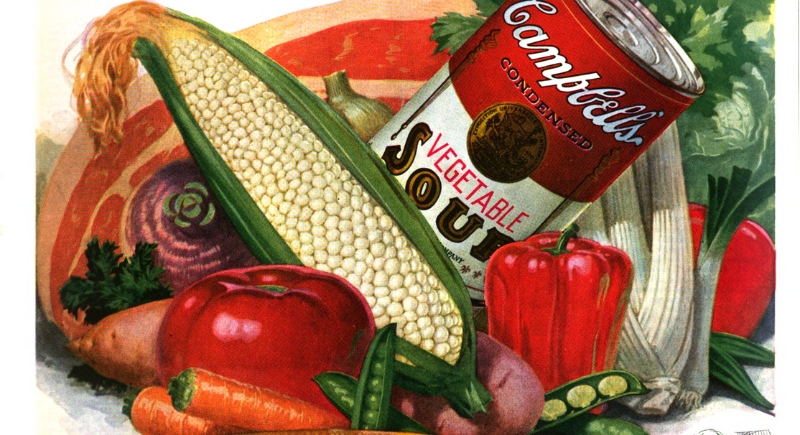The Very First Campbell’s Soup Flavor Might Surprise You
Campbell’s has been lining grocery shelves in the United States for well over a century, its red and white cans instantly recognizable and steadily produced by a company rooted in Camden, New Jersey. The label first appeared in 1898, inspired by Cornell University’s football colors, and it has remained a constant presence as the company grew into a major name in packaged foods. Today, Campbell’s lineup includes soups, sauces, and snacks, with factories operating across the country and products shipped nationwide.
Before this wide range existed, the company started small with a single soup. In 1895, before condensed packaging came into play, Campbell’s released Beefsteak Tomato in a glass jar. That first flavor set the foundation for a business that would expand far beyond its early offerings, and its story shows how a modest idea became a staple of American food production.
Two years after the Beefsteak Tomato appeared, a young chemist named John T. Dorrance joined the company. He was only 24 years old and earned seven dollars and fifty cents a week. His scientific approach changed production forever when he worked out a method to remove a significant portion of water from the recipe. That innovation led to condensed soup, which meant lighter shipping, smaller storage, and lower costs for families.
By 1897, the company shifted from glass jars to the condensed cans now known around the world. Beefsteak Tomato stayed at the front of the lineup and gave people an affordable, shelf‑stable option with a thick tomato base. At the time, a single could cost ten cents.
Beefsteak Tomato and the Early Years

Image via Wikipedia/Curtis Publishing Co.
The tomatoes used in that original recipe were New Jersey beefsteak tomatoes, known for their rich pulp and bold color. They gave the soup a full, slightly sweet profile that people found easy to use in everyday cooking. Families could pour it into a pot for a quick meal, or add it to stews and sauces to stretch ingredients further. Even in those early years, Campbell’s had competitors, but the condensed design and flavor variety set them apart. By the late 1890s, oxtail, mutton, and consommé also made appearances in their lineup, but Beefsteak Tomato remained the flavor that had started the whole venture.
In 1898, the company introduced the red and white label inspired by Cornell University’s football uniforms. That design turned out to be as recognizable as the soup itself. Over time, the label added a bronze medal seal as a tribute to an award earned at the 1900 Paris Exposition. These details helped mark a visual identity for the brand. Decades later, artist Andy Warhol brought further attention to Campbell’s with his series of paintings, but long before that, the cans had already found their place in kitchens across the country.
Building a Wider Variety
By 1933, Campbell’s offered more than twenty flavors, including Pepper Pot, Vermicelli-Tomato, and Mock Turtle. Some of those blends no longer exist today, but they show how much experimentation took place once the condensed soup method became standard. The company expanded again in 1934 by introducing Noodle with Chicken, which would later become Chicken Noodle. Cream of Mushroom also arrived that year and found its way into countless casseroles.
In those early decades, Campbell’s worked closely with farmers to maintain a steady supply of vegetables. Agricultural experts met with growers to discuss planting techniques, crop rotation, and seed selection. This effort supported consistent ingredients for their recipes and allowed the brand to grow. By the 1940s and 1950s, Campbell’s had moved beyond soup alone and acquired companies like Pepperidge Farm and later V8, while producing classic canned goods in Camden and other facilities.
The Ongoing Legacy
Beefsteak Tomato eventually faded from shelves as recipes and tastes changed. Tomato soup remains a popular choice, but it is not the exact version first released in 1895. The early flavor represents a turning point in packaged food. It proved that a company could prepare a product with enough care that people would bring it home again and again. Even as the brand grew to include snacks like Goldfish crackers and expanded into global markets, that first soup established the foundation for everything that followed.